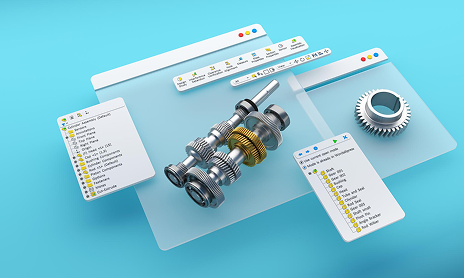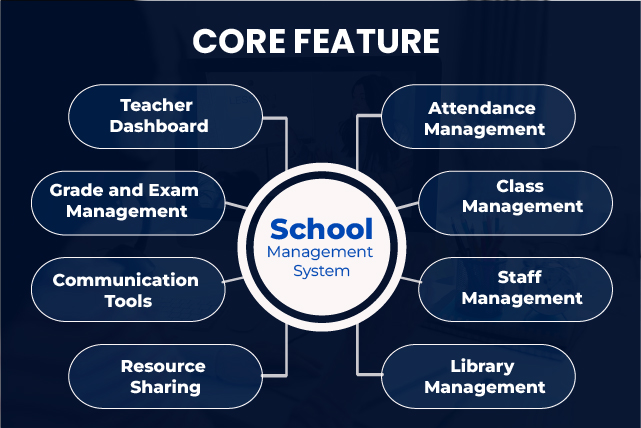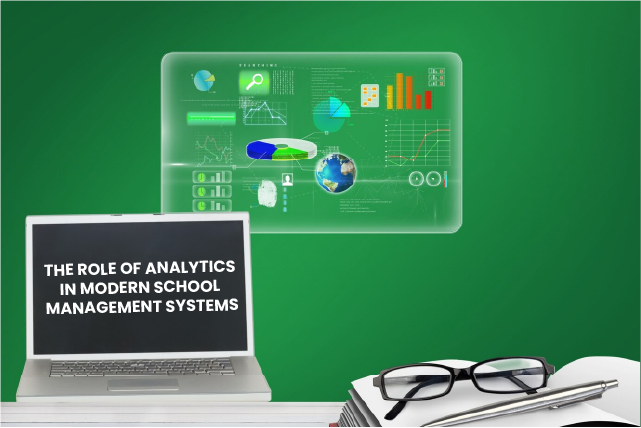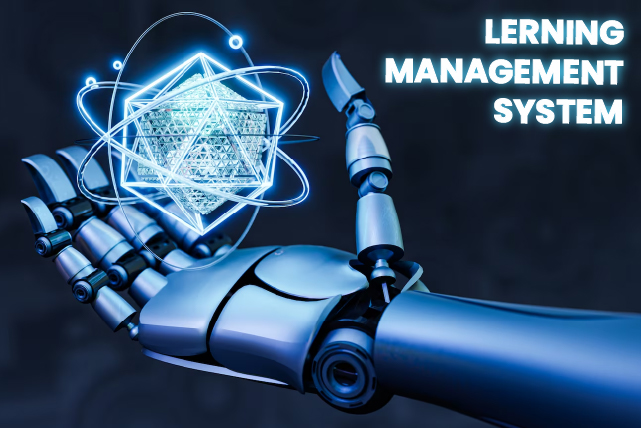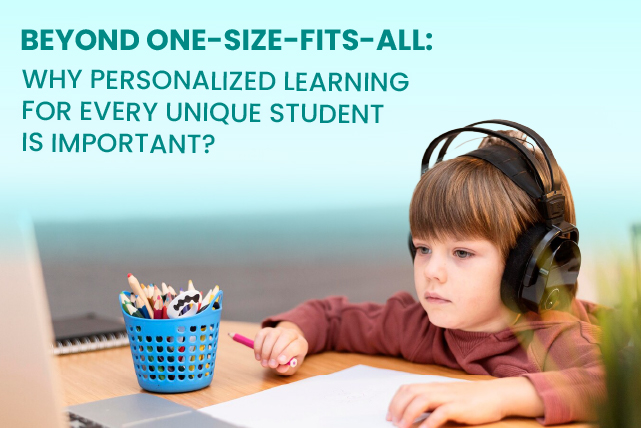
How School Management Systems Integrate Learning Management Tools
The innate need for physical classrooms impedes learning to a greater extent. However, backed by digital evolution, learning can be accessed from anywhere and almost for free in some instances. See how fast you can gather knowledge about multiple things simultaneously and how the conventional teaching method has become outdated.
That's why you need to stay relevant and offer the services people are looking for–the learning management system is one such technologically-driven approach that blends with your school management system.
The fusion not only curates student data and course content in one place but also offers seamless access to learning materials, evaluations, and real-time progress tracking.
But to what extent and how school management systems integrate LMS tools? This discussion will emphasize the ways these features harmonize and reap success.
What is a Learning Management System?
Before getting into the bigger picture, what does LMS or Learning management system stand for? Well, it's a web-based technology or a software application that makes the most of strategizing, implementing, and evaluating a distinct learning process. At its core, this software empowers educational institutions to manage all the elements of an E-learning framework.
What's more, it is a consolidated E-learning centre that allows instructors to tailor and administer lessons, attribute quizzes, and grade students. Beyond that, it makes communication between teachers, students, administrative staff and parents easier than it ever was, thanks to the open communication channel.
The sudden surge in popularity and adoption of E-learning has a lot to do with the post-pandemic effect. That period came as an epiphany for educators and corporate businesses.
Moreover, incorporating a centralized platform for doing all the work under one roof was long overdue. A report from 2020 suggests that the LMS market can retain an upward trend to reach a whopping $36 billion by 2026.
In the cold light of day, it also plays a vital role in the EdTech market, especially for startups and new organizations.
Integrating LMS with School Management Software
The integration of a learning management system and a school management system simply refers to the blend of both. With the assimilation of their functionalities, this process gives rise to a unified platform. Now, why do you need that?
As someone who is working in this sphere, you can manage everything through a single interface, from administrative tasks (like student enrollment, grade management, and attendance) to educational activities (such as lesson deployment, assignments, and assessments).
6 Key Features of LMS Tools Integrated Into Your School Management System
This section urges to highlight the key features of LMS, the integration with SMS, and the outcomes, one by one:
- Manage Your Courses Like a Breeze
One of the most primitive functions of LMS is course management. It lays the groundwork for students to be prepared for upcoming academic ladders. From the outset, the main focus always stands on the course administration activities, which include pre-registration, transformation, deployment, and order management (if your organization plans to sell online learning materials).
The feature extracts the monotony and exhaustion of such laborious tasks by simplifying them, especially if you already have learning content like documents, videos, exams, etc., in your arsenal. These contents are often scattered and unorganized, which is why LMS tools help you accumulate and curate the content into a structured format within the learning management system.
As a result, you achieve easier access, meticulous management, and effective delivery–in a cohesive manner. Change of circumstances: if you are starting from scratch, you can benefit from the built-in course creator to tailor courses with immersive visuals from zero.
Added Bonus
The most attractive feat here is that your content can be labelled by the subject name, the time of creation, the school year, and a lot more. Imagine the time you can save by unloading these pesky tasks and investing in the greater aspects, such as arranging learning materials, curriculum, assessment, and other key metrics for a personalized learning curve.
Integration with SMS: Combining the course management feature in your existing school management software helps you align it with your school's curriculum structure, student info, and grading standards. On top of that-
- When you incorporate this feature, it automates course enrollment processes.
- Your students enjoy real-time updates to their schedules and seamless access to learning resources.
- It leads to a more efficient and engaging academic experience for all learners.
2. Effortless User and Group Management is Not Anymore a Dream
It's no surprise that preserving the hierarchical flow in your institution is instrumental for the overall success. In its most authentic form, the hierarchical nature within a school management system simply mirrors the organizational structure of your school, fostering clarity, order, and security. You wouldn't want to manipulate this typical structure of your day-to-day operation with something over the top; it will only overwhelm the task.
Luckily, that's not how LMS tools roll. Instead, features like user and group management tools invigorate your entire organization as your work becomes simpler than it already was. You can categorize your students into specific groups, focusing on their location, year of enrollment, training type, special needs, and more.
It is worth mentioning that your institution must be inclusive, where disabled students are embraced and offered tailored assistance. Take Onest Schooled for example, with their LMS tools, you can zero in on each student's performance to assign courses and judgments that are solely customized for them.
Added Bonus
What is more, the advanced features facilitate bulk invites and self-registration as well as convey timely alerts for due courses, completed courses, and the last date of certifications.
Integration with SMS: With the integration of LMS group and user management features, your pre-existing SMS structure of class and group-based academic hierarchy becomes more simplified. Such as,
- Creates a single profile for each student, synchronizing academic and personal information for consistency across both systems.
- Enables automatic enrollment in corresponding LMS courses, reducing manual administrative work.
- Each user (students, teachers, parents) receives appropriate access permissions based on their role, ensuring secure, role-specific data handling.
- The integration offers group-specific notifications, so your students and parents receive timely updates on relevant assignments and deadlines.
- Teachers can easily monitor both systems' attendance, grades, and engagement metrics, offering an all-inclusive view of individual and group performance.
3. Achieve Advanced Reporting and Analytics in Centralized Data Management
The reporting and analytics module acts as a command centre for all the activity in the learning management system (LMS). Think of it as a combination of a student grade book and a comprehensive teacher's report.
One of its key features is the ability to quickly see overall learner averages and final test scores. Instead of scouring through each student’s performance, you can have access to entire groups or individual student reports with a swipe of your fingertips.
This simply wipes out the unnecessary clutter from your view and helps you locate the areas of improvement. For instance, in a conventional setting, you would need to check each student's growth or decline, giving you a roundabout idea about the overall performance. But what about the things that eyes can't see?
What happens if a mere 10% of your students are on the verge of falling apart? LMS data analytics prevents such circumstances from emerging and ensures that 100% of your students are on the right track. Plus, you can track who has completed their courses and who hasn't, giving you a panoramic view of student engagement.
Added Bonus
LMS lets you assess the learning process itself. You must know whether the lessons you are providing are on par with modern education or not. The analytics generate reports based on key metrics such as global and international course standards and trends, so you are always one step ahead. With the targeted insights under your sleeves, you can patch up the overall quality of your institution.
Integration with SMS: The fusion of SMS and LMS equips you with a bird-eye-view of overall student progress, such as
- SMS combines LMS course data with attendance and behaviour records, giving a 360° view of each student's progress.
- Integrated analytics enable SMS to flag at-risk students by monitoring LMS performance alongside broader school data.
- Aggregating LMS metrics within SMS reveals patterns in student engagement and learning outcomes across courses and terms.
- Teachers and counsellors employ unified data to tailor personalized academic plans for students and initiate strategies.
4. Proficiency Assessment Simplified
Outcome-based learning should be the core objective for any educational institution, no matter which type of e-learning you offer your students. This is simply because it sets clear, measurable goals for each student, acting as markers along the way. Students can highlight the areas they shine and falter as they proceed and make the best out of their skills. No wonder the importance of testing and assessment features is unprecedented.
These tools streamline the individual assessment process based on each student's distinct skill, considering how overemphasis on academic goals can mar the growth of a student's proficiency in a particular area. They let you manage online, private, timed, scored, and formative tasks to record individual progress in contrast to educational objectives.
On top of that, these features are inherently flexible so that you can host different types of tests, such as multiple-choice exams, surprise tests, interpersonal skill tests, pre-tests, post-tests, and more–the sky is the limit.
Additionally, if you want to make the learning process more riveting, you can insert thought-provoking quizzes at the end of your courses, followed by a reward or points. This keeps your students encouraged and satisfied throughout the process.
Added Bonus
Apart from the just testing and evaluating you get access to the overall performance data that is preserved in one place– be it you uploading the offline exam results or the system itself.
Integration with SMS: As you receive the test scores from the LMS features, it travel into your SMS grade books automatically. Therefore, you can have a unified record of each student's performance. This includes-
- Teachers leverage SMS analytics to compare online assessment scores with in-person grades, offering a balanced evaluation.
- Test and quiz results from LMS flow directly into SMS, providing teachers and parents with instant access to recent performance data.
- SMS imports LMS data to identify trends across classes and grade levels, helping administrators set and monitor school-wide academic standards.
- Feeding the acquired assessment data into your SMS can generate detailed, customized reports for targeted interventions.
- Parents stay on the same page as you, gaining insight into both online and offline assessments.
5. Collaborative Learning for Future-ready Students
Education doesn't confine itself to textbooks only. Therefore, your learning method should employ certain strategies to develop social skills, higher-level thinking, leadership skills, and self-management of students. One such strategic approach is collaborative learning which lies in group dynamics.
It's amazing how you can demonstrate the positive impact of individual autonomy on your students. Through this learning method, students from diverse backgrounds and with different skills come together and work in unison, having one common interest and shared objective. Now, how do you adopt that?
LMS solutions take over these intricate and labour-intensive tasks as they are engineered with social learning tools such as discussion forums, group assignments, real-time chat and video conferences, collaborative documents, peer assessment, social learning feeds, wikis, shared documents, etc.
It's interesting to see how students in group settings interact more as they showcase their skills, challenge shared ideas with logic, and learn from one another as they go. The notion hinges on individual participation in a collaborative task that amplifies their skills and allows them to observe firsthand how their contribution rolls out in the end.
Added Bonus: Most importantly, these tools prepare your students for the professional realm, where team leadership and bond fortification are critical. Engaging in group projects, they learn to hold one another accountable, share diverse perspectives, and undertake complex tasks to solve independently. Thus, when your students step into the corporate sphere, they are more dependable, trustworthy, and efficient.
Integration with SMS: The right nudge you need for your SMS software is incorporating collaborative learning tools into the system. It lets students receive quick updates, reminders, and access links, which helps them stay connected and engaged with prevailing discussions directly from their phones. Also-
- When this learning tool synchronizes with your school management software it sends instant notifications for new discussion posts and collaboration updates.
- Students receive SMS alerts for replies or comments, keeping them engaged in ongoing discussions.
- SMS reminders notify students about upcoming collaborative deadlines, ensuring timely participation.
- Group messages via SMS help students coordinate projects directly, even outside the LMS platform.
6. Keep Stakeholders In the Loop with Important Announcements and Reminders
An e-learning environment is devoid of physical interaction, which is why you must communicate immediately and timely to retain optimal involvement with all members involved. But in practicality, you can't write unique and personalized messages every time for your administrators, trainers, and trainees.
Instead, it would be best if you had LMSs that offer an automatic notification management system, as it sends email messages by default whenever a particular event emerges. For instance, when one of your trainees finishes a course, you can make the platform send a completion message and inform the training manager about the development.
Or, if you want to remind your students about the deadline for assignment submission, this feature can notify them with a short message alert. All you need to do is embed the initial definition and messages in the system. The rest will be handled by your LMS and SMS software.
Added Bonus
As your system does the job without any human intervention, it curbs the need for manual labour in every aspect of communication. By keeping all the stakeholders informed and engaged, you bridge the gap between e-learning and physical learning effectively.
Integration with SMS: These LMS tools integrate seamlessly with school management systems by syncing schedules, automating notifications, and offering a central hub for timely updates as follows-
- LMS reminders and announcements sync automatically with the school management system's calendar.
- Alerts are sent in real-time to students and staff via email, SMS, or app notifications.
- Announcements from the LMS are visible across both systems, keeping everyone informed.
- School admins can pre-schedule reminders and announcements to align with academic schedules.
How to Unlock the Full Potential of a Learning Management System
Just the integration of LMS solutions alone won't bring favourable outcomes if you are not making the best out of each prevailing feature. At the end of the day, it's software that does most of the work without human intervention. Meaning it lacks judgment, adaptability, and nuanced understanding.
As you remain in control, it's on you and everyone associated with the learning platform to maximize the features. Ensure your money is well-spent and the system is worth every penny with these tips:
-
- Navigating through these software solutions can be intimidating and perplexing at first. To lighten the air, it's always better to have a video tutorial of how specific users should use it. Better if you are running an offline institution and leveraging these tools. You can host a FAQ session on-premise. It will create an open space for everyone to clear their confusion and make the most of the features.
-
- For any student, the sense of achievement acts as the building block for high self-esteem and confidence. Hence, you should always set achievable goals for your students and reward them for their participation and performance. It shouldn't be too hard for students to have their winning moments as it might deter them from improving.
-
- Any institution that wants to thrive in this industry must give precedence to branding and customization. As it appears, it all boils down to user experience. If the UX designs, formatting, visuals, and navigation aren't interactive and immersive enough, then it's only plausible that the users will be deterred from using it at all. You want a brand identity and an aura that resonates with your objectives. Even through the screen, you can tell your brand story as you lead the users to their destinations. Always pick attractive colour schemes, fonts, logos, footers, and headers that are consistent throughout your institution's image.
-
- Take full advantage of the endless data your LMS system generates to track learner growth, gauge their attention spans, and include surveys to accumulate real-time insights. Once you get the metrics and feedback, tweak the system as needed. Statistically, 67% of educational institutions have yet to become well-versed in the analytics deployment for various LMS processes. It's time to optimize these tools to be on the safe side.
- You can transform your classroom experience by integrating features like leaderboards for lessons and quizzes. Moreover, with the Onest schooled LMS solution, you can customize the process with goal meters and milestone maps. These elements remove the pressure of winning, as students focus more on enjoying the journey. Here, the sense of healthy competition pushes everyone to give their best.
- Take full advantage of the endless data your LMS system generates to track learner growth, gauge their attention spans, and include surveys to accumulate real-time insights. Once you get the metrics and feedback, tweak the system as needed. Statistically, 67% of educational institutions have yet to become well-versed in the analytics deployment for various LMS processes. It's time to optimize these tools to be on the safe side.
End Quote
The best way you can cope with the evolving educational demands and stay competitive is through the blend of both physical and online elements. Thus, you must integrate LMS with school software for the right balance. As you cater to individual student needs by making education accessible, organized, and tailored to every requirement, you position yourself at a higher standard.


